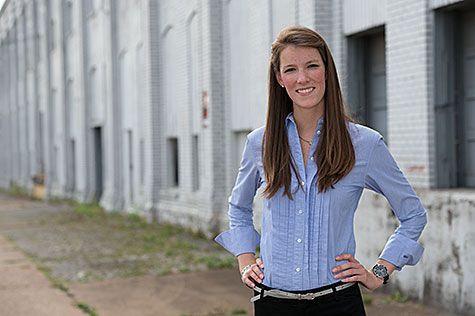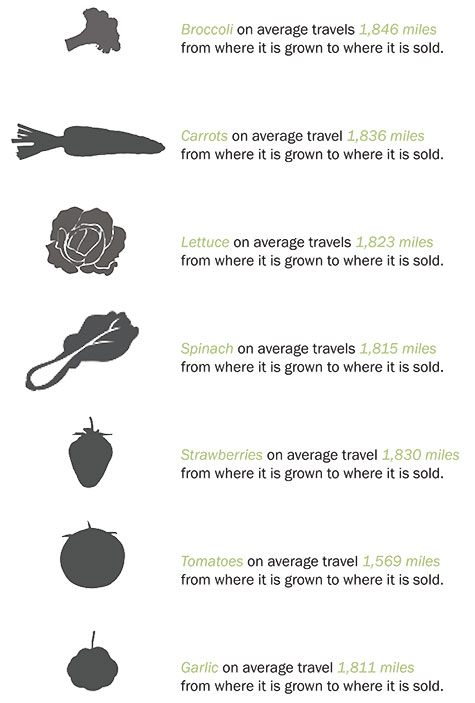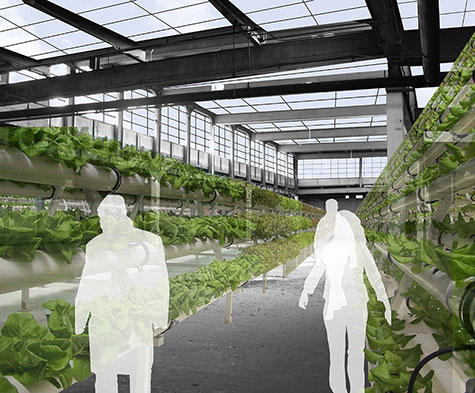
(Credit: Joe Angeles/WUSTL PHOTOS)
What inspired your design?
Coming from Chicago, I’d heard legends about The Hill and its restaurants. So much of the neighborhood’s history, heritage and pride revolves around food, so that became the focus of my proposal.
What do you see as the biggest challenges to redevelopment?
For one, you have to make sure anything you do is something the local community actually wants. And the site is huge — it’s not likely any single tenant would require a half-million square feet. Housing would be difficult because a lot of these spaces don’t have much natural light.
On the other hand, the complex would almost certainly qualify as a historic landmark, which means that much of the rehabilitation cost would qualify for local, state and federal tax credits.
So, what do you propose?
Well, right now there’s a lot of interest in locally grown food. For example, WUSTL has a requirement that 20 percent of food sold on campus be locally grown. But a lot of places have trouble finding sources.
When I started looking into this, I realized it would be a fantastic way to reactivate the Magic Chef property and reutilize the old train line. So basically, I came up with a whole manufacturing cycle. The train comes in, seeds are taken off, cleaned, graded and separated. Next, they’re brought to the planting space, where they’re watered, fertilized and grown, then brought to the processing plant, where they’re cut, washed and packaged. From there, they can go back onto the train line or out to the truck loading docks.
There’s also a green grocery store, where some of the produce could be sold to the community, and a courtyard space, where people could sit, grab lunch and listen to music. I added a new western façade that would unify a number of disparate buildings. Tempered glass panels would transition from red to green, creating a 100-foot-long abstraction of the Italian flag that pays homage to the neighborhood’s cultural heritage.

Do any existing hydroponic farms operate on the scale you’re proposing?
Not in the U.S., but in the U.K. there’s Thanet Earth, an enormous greenhouse complex. It opened in 2009 and now provides something like 30 percent of produce sold in London.
Talk a little about how hydroponics work.
Imagine a lettuce plant. In the soil, you can only grow one plant per square foot. With hydroponics, the plant is floating in water, which allows higher density — four per square foot. In addition, because it’s a controlled environment, with controlled lighting and temperature, you can harvest up to six crops per year. And plants like tomatoes and peppers can grow up to 15 feet in the air, which means you can go vertically as well.
In all, you get something like 100 times the yield rate of traditional farming — and there aren’t any pesticides.
You actually propose a variation called aquaponics…
The idea of aquaponics is that you have fish, either trout or tilapia, living in the water. You feed the fish, they excrete waste, which provides nutrients for the plants. The fish eat the bacteria, you harvest the fish… It’s a full cycle.
Have you calculated the potential annual yield? How many tomatoes are we talking about?
Well, I have three levels of planting, on the first floor, second floor and also the roof. That gives us 7.09 acres. If you multiply that by the revenue from cherry tomato crops, you have a potential for about $8.5 million in the first year alone.
That’s a lot of tomatoes.
Yes it is.
